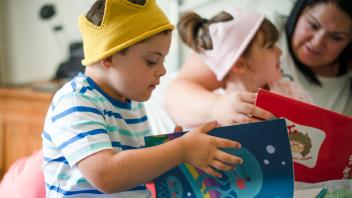Some picture book writers are like rappers; even though they’re gone, their work continues to be reworked and reintroduced.
And so it is with the author of Goodnight Moon , The Runaway Bunny (both HarperCollins), and many other classics of childhood (which, by the way, continue to inspire newly illustrated editions ).
If Margaret Wise Brown was alive, she would celebrate her 100th birthday later this month. (She died in 1952 at age 42.)
Leonard Marcus — Brown’s biographer — has reworked Brown’s own words in an imagined interview in a recent Horn Book Magazine . What struck me was how little things have really changed since Brown first wrote her books; they were criticized for being about the familiar, about being simple — yet nonetheless, Brown’s books have endured.
Children’s books may look easy to write, but the good ones are anything but easy. Brown is quoted as saying that she writes a draft in about 20 minutes but then spends two years (yes, years) “polishing” it.
Mo Willems (author of the award winning Pigeon books and Knuffle Bunny) writes and creates illustrations relatively quickly, too — and then spends most of his time revising, polishing or as he’s said, taking things out. Willems tries to make his art and text work seamlessly; it is after all, an experience in which the child-reader takes an active role. He/she must be able to empathize with both the pictures and the words.
Books for young children have roots in the familiar but in order to be successful, they should build on the familiar and allow children to see or feel or imagine something they didn’t even know they knew. (Think of Sendak’s Where the Wild Things Are (Harper) and the quieter Goodnight Moon.)
And they work best when something timeless is presented that “speaks” to generations of readers. And that usually means that both the illustrator and writer are invisible — and ageless.
About the Author
Reading Rockets’ children’s literature expert, Maria Salvadore, brings you into her world as she explores the best ways to use kids’ books both inside — and outside — of the classroom.

